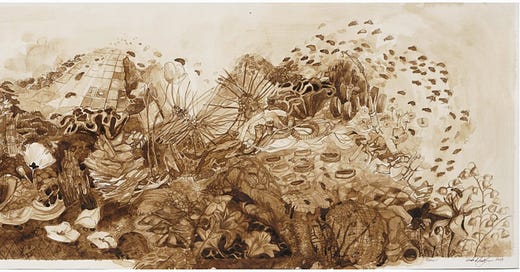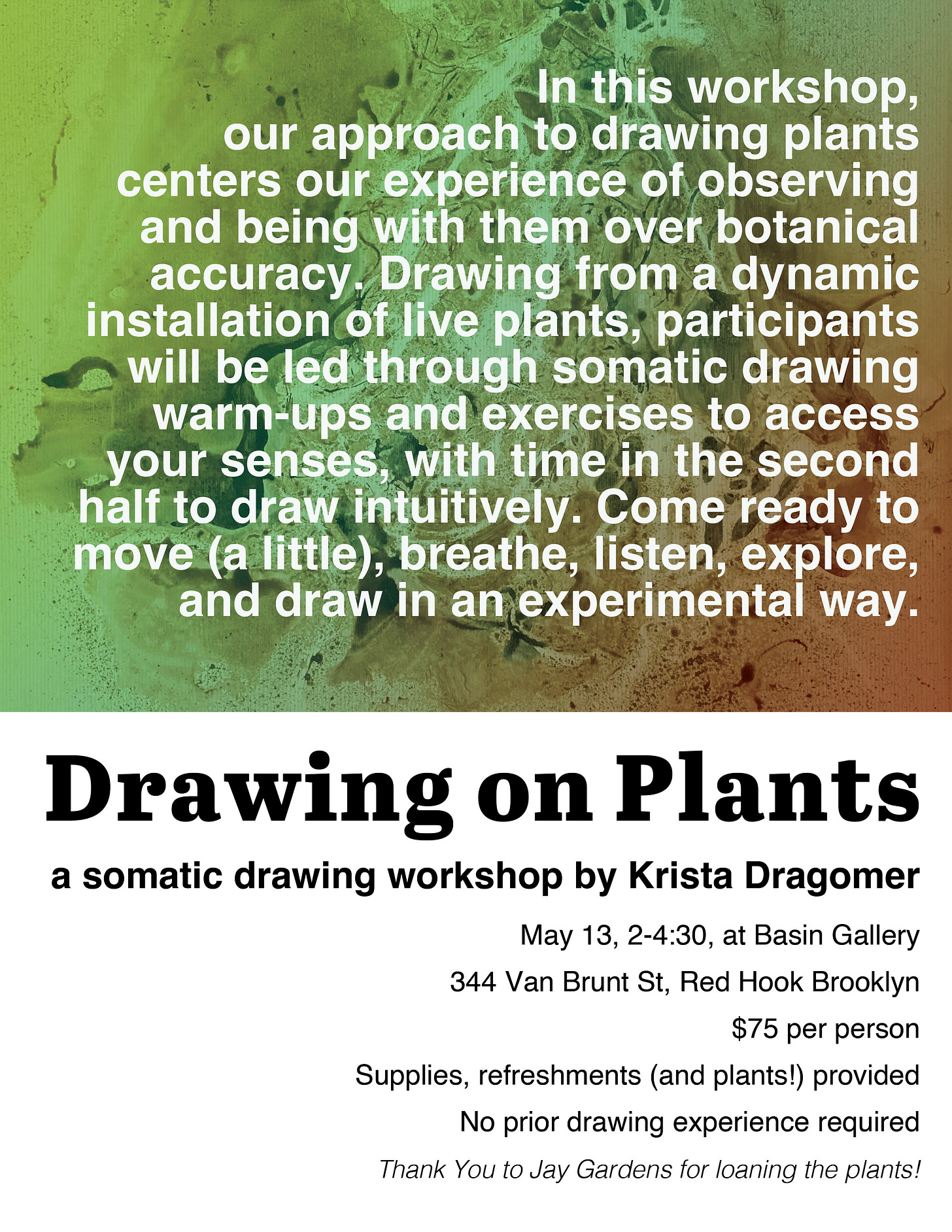I am reflecting, in this post Earth Day post, on presence and practice. How can we be present to the earth, to being earthly, to our shared earthliness with all of the other earth beings? How can we be with the immensity of feelings our earthly relations stir in us?
We are ecological beings. We share what is carried in the wind. We share the air and resources and each other’s atmospheres. And those atmospheres allow us not only to breathe but to think, our physical and abstract worlds equally shaped by the sentience of all our complex coexistence here on earth. How then can we think with atmospheric awareness? How can we be present to a condition that permeates us yet is rendered imperceptible by our inattention?
Some of these thoughts I recently wrote in a personal letter and they have been thrumming in my body since. The context was different, it was about human to human relationships, but the reach in my heart is the same when I encounter my desire to stretch across a distance to care for my earthly kin, to feel the sustenance of our roots, entangled, to conspire, that is, to breathe together.
Being present to the conditions of our earthliness is a bewildering mix of beauty and horror. What do you feel when your heart reaches out to a thicket of roadside mugwort, a parking lot seagull, a smoggy sunset? When your body branches in every direction at once, seeking the bare beauty of survival?
Overwhelm.
Many of us earthlings struggle with this. It’s a white flag of a word, a sad lament, a warding off, an explanation we call out over our shoulder when we’re already running away. The word overwhelm came into common usage in the fifteenth century. The root verb, whelm, has faded away but seems to have meant to arch over or render a shape convex.
We arch our human animal bodies in pleasure and pain, in the sudden shock of sensory abundance. We arch over those we want to protect. We are made convex in the erotic embrace of the earth’s gravitational pull, rounding us over the surface of its body warmed by sun and molten rock. When we are overwhelmed we are flipped over, made concave, made to carry, made a bowl, a boat, submerged. Flooded. Saturated.
Overwhelm is our capacity to hold.
Numbness.
Many of us earthlings find ourselves numb in the face of widespread earthly pain. If overwhelm is the white flag of feeling, numbness is the white noise, an everything that feels like nothing, a cacophony that sounds like silence. The root verb long extinct, its past participle, numb, carries in its genes “to take or to seize.”
What is taken? Our rootedness. Our mycelial familiae.
What is seized? The sustenance we receive through our indispensable interdependence.
Both overwhelm and numbness are a form of presence, of recognizing the too muchness of feeling. To feel overwhelmed or numb is to feel an unbearable ongoingness, the collapsing of past and future into a present too heavy to hold. But, it is not absence. It is not a wish, a refusal to acknowledge the current conditions of living. Overwhelm and numbness mark us as present to feeling, even to those we cannot contain.
So how do we go on with this unbearable ongoingness? One way might be to listen to trees, who have borne witness to more than we can imagine. Can we witness them with the steady focus they show us? Try it now. Stand in front of a grizzled city tree, limbs severed and threaded through with powerlines, trunk cleaved and pierced by iron railings and chain link fencing. And yet still sending out, in the spring, hundreds of tiny shiny green leaves, giving us a little more space to breathe. Or, if you’re lucky to be in such company, walk amongst a grove of cherry trees, sending out exuberant pink prayers by the thousands. What shapes does your body want to make in the presence of trees? Feel the strong stance and the sway. That’s the trees talking, and they have plenty to say.
Ongoingness is a practice. One way I practice ongoingness is to draw. Drawing is an observational practice. We observe the drawing subject – a plant, feeling, motion, even an imagined place – through our senses that are weaving our external and internal environments together into perceptions, interpretations that we translate into marks on a page. Somatic drawing, like the drawing we do in Drawing on the Senses, is a coming back into feeling. When we draw somatically, we notice the presence of those perceptions in our bodies, how they shape the way we move, think and feel. We become aware of the depth of relationship already existing between observer and observed. We may even lose our sense that there is any difference between the two.
Feeling into what is shared, we make an agreement to go on together.
In sync with the seasonal shift, I’m shifting my offerings here from general thoughts on creativity and creative practice to more specific reflections on drawing on our earthliness. For those of you doing the DOTS exercises, I’ve put one more on the Drawing on the Senses page so you have that set of 12 warm up exercises and reflections to use in conjunction with this next set of drawing exercises and experiments.
I also want to mention that I will be teaching a workshop, Drawing on Plants, at Basin Gallery on May 13. We will be borrowing plants from Jay Gardens down the street to create a dynamic installation to draw from. You will close your eyes, breathe with plants, draw with two hands, draw while touching plants, draw from the planty places in yourselves while I read aloud some of my favorite planty poems, stories and essays. In the 2nd half of the class I’ll give you time to draw intuitively, to settle into your own drawing rhythm.
And for those of you looking for an online deep dive version, I’ll be launching a virtual Drawing on Plants course in early May, details coming soon!





